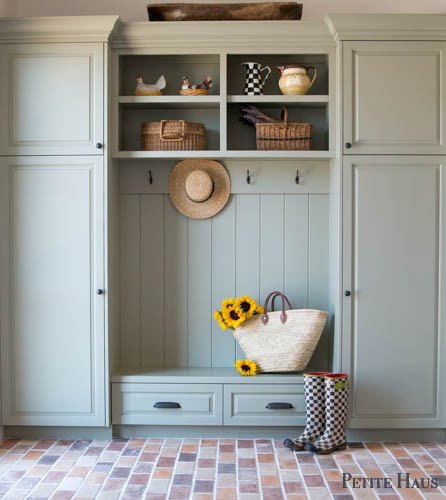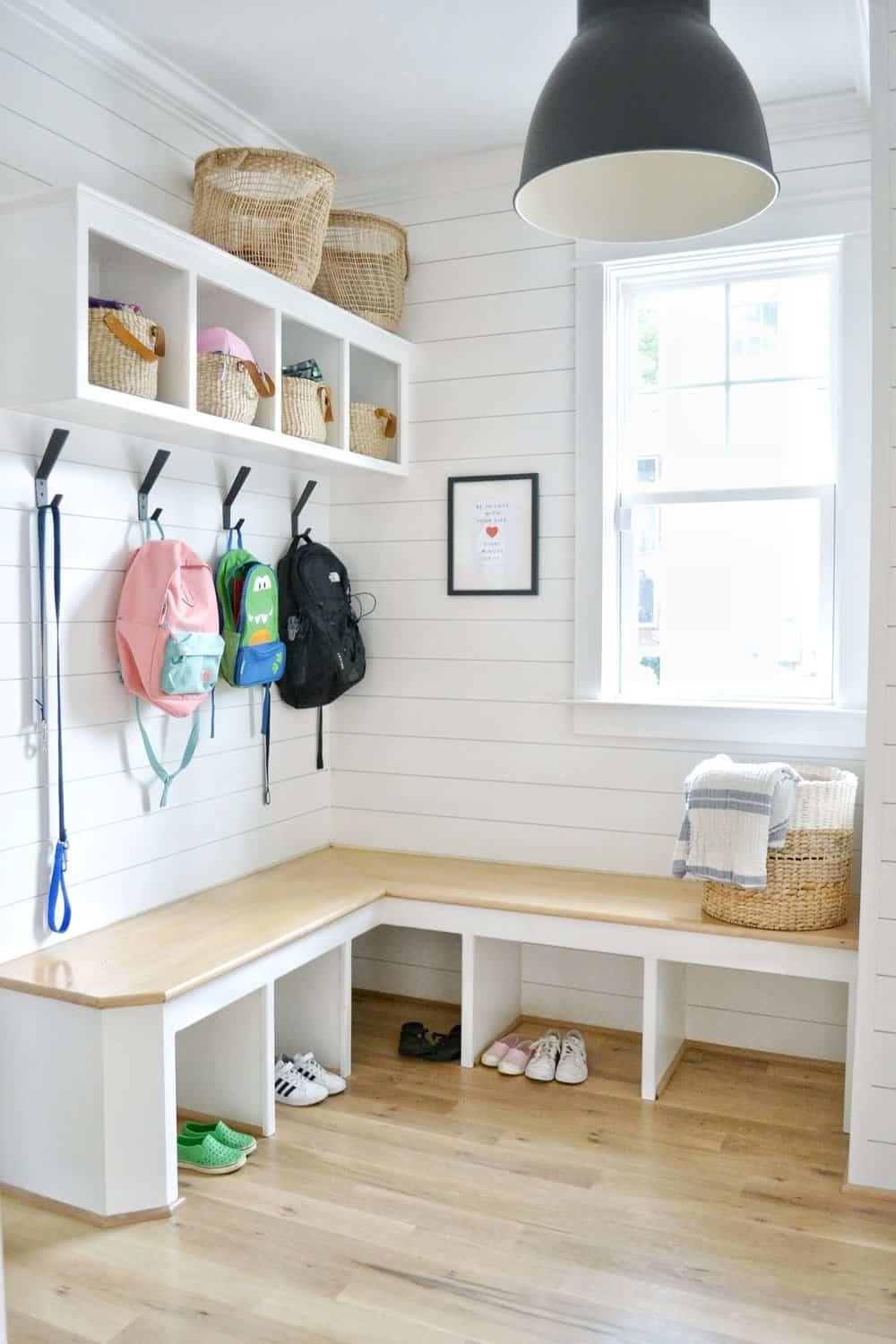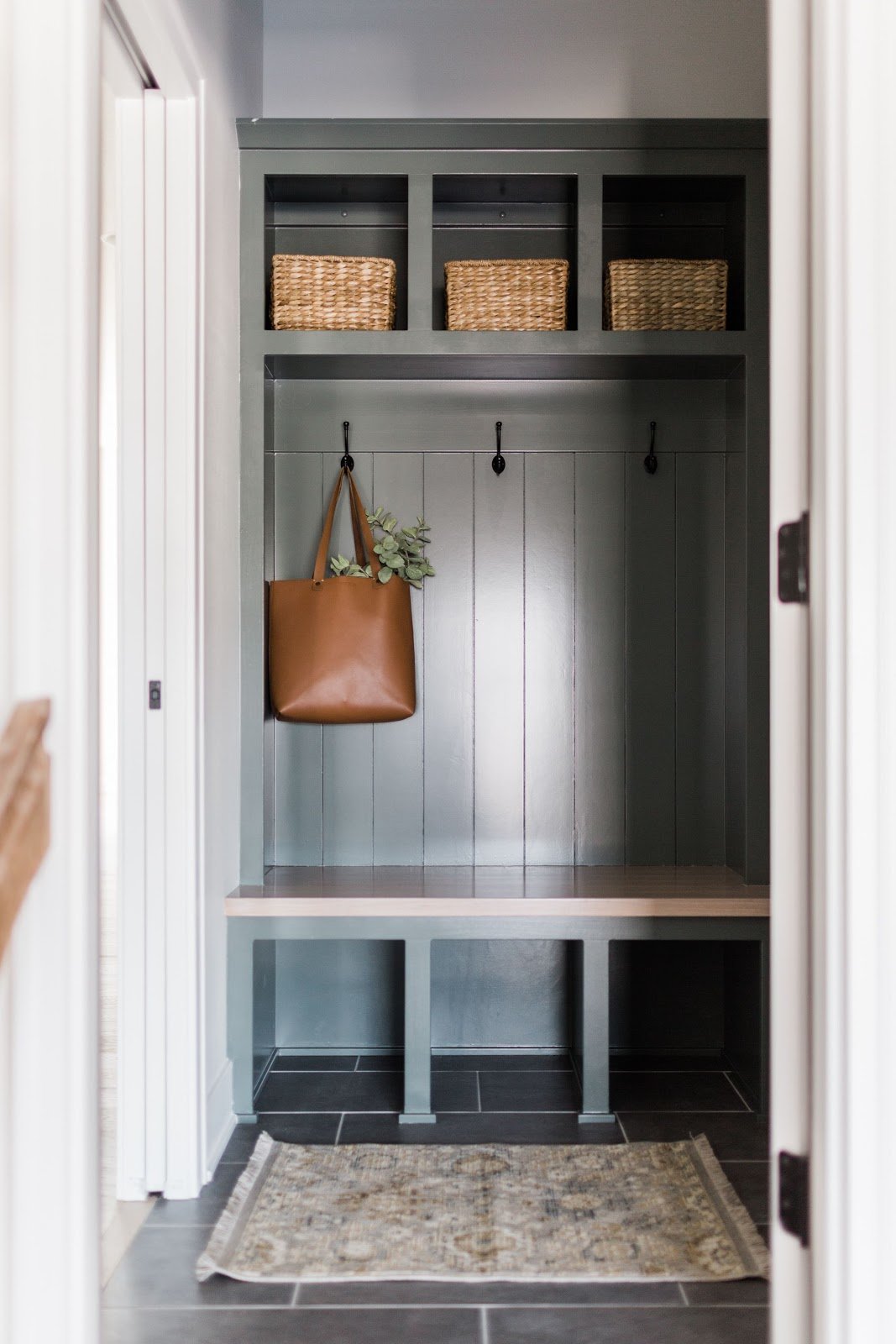
Photo: Petite Haus
Today’s article features what we feel are the best mudroom designs in regard to the use of space. Lots of new homes are being built with an owner’s entrance (also called a mudroom) but lots of homes don’t have a dedicated space for this function. Many are taking to converting their laundry rooms into “two-fers” that serve as both a laundry space and the organized catch-all we call a mudroom.
The springtime energy creates a buzz to be out and about, and the best mudroom designs can very well make our lives easier. Regardless of why you’re designing this ultra-useful space, remember the most important thing when you start designing: how your family functions.
Ask yourself a few questions before you lay out your ideal room:
-
How do you gather before leaving your home - do you need certain items organized together so things don’t get left behind?
-
What happens when you arrive home - are there lots of items that need storing right away?
Outlining your functional needs will help you determine design priorities. We’ve listed some mudroom highlights and questions to get you in the organization mindset. Have fun planning how to organize your mudroom!
The Best Mudroom Designs: What’s Your Goal?
Do you want to keep a lot of on-the-go items at the ready? Is your mudroom more of a drop zone to leave mail, bags, and keys? Do your animal’s toys and food belong in the mudroom? Does your family overall need more structure on where to leave items so they can be found again?

Photo: Chrissy Marie Blog
These answers will help you determine how to get family members on board and keep the space organized. Generally, the goal of a mudroom is to create a space that everyone can help maintain the everyday mess.
Large Space or Large Family
For a super functional space, it may work best to have dedicated spaces for each family member. Personalities come into play when keeping things organized, and name tags and labels can help keep kids (and adults) accountable for their items.
Larger families or kids varying in age may best organize by person: hooks and space for a teen’s sports bags, a spot for the dog leashes, waste bags and wipes and a spot for each adult.
A bonus feature: incorporate a bench or stool to put on shoes and remove boots and cleats.
Small Space
A family with small children who use the same everyday items might benefit from a kid zone and an adult zone.

Photo: OakstoneHomesIowa
This setup can also work for small mudrooms. Set up zones for similar items:
-
Use hooks for things like jackets, tote bags, and purses.
-
Baskets for to-go items and/or items you don’t want visible at all times like face coverings or winter gloves.
-
Wipes, hand sanitizer, extra grocery bags, and other little things also fit well into a basket.
-
Make some lower cubbies to organize outdoor-use shoes like cleats, rain boots, and work boots.
Create a Drop Space
What’s the first thing you want to do when you walk in the door? Put your things down! Whether it’s your bags, the kids’ backpacks, the mail, something always needs to be set down.
One of the most crucial parts of the mudroom is the drop zone. Here is an idea to keep dropped items organized so the chaos doesn’t immediately take over.
-
Hooks
-
Bins and baskets
-
Shelves
Most of us have something to hang, like keys or dog leashes, baskets for mail, and shelves to hold our travel mugs while we’re getting situated near the door. No matter how much space you have in the dedicated mudroom area, one or all of these functional features will help entering and leaving your home less stressful.
A Place for Shoes
Shoes are often thrown or left askew on the floor and just asking to be tripped over. If the mudroom can serve any purpose, it is to keep the mud contained to one area. While we don’t have a mud season here in the Lowcountry, we still track lots inside from our endless nature excursions. Most of the time it might be sand from the beach, water from the pool or dirt from the trail, but we still don’t want to bring it all the way inside.
Corral the shoes most often used for outdoor activities: work boots, rain boots, flip flops, gardening shoes, golf shoes, etc. with low cubbies. Once the shoes are dried from the elements, brush them off and stack a few pairs into cubbies on the ground, tucked out of the way.
Conclusion
Keep your home clean with functional spaces that make life easier. When planning your mudroom designs, remember:
-
Begin planning your space by establishing a goal. Fix the overflowing shoe problem? Get the bags off the floor? Break this down by answering a few questions.
-
Create a drop space to make leaving and arriving pleasant. No more searching for the keys!
-
No matter how big or small your mudroom is, create a zone for shoes.
Which of these mudroom designs and functional zones will work best for your family? What features will you add to your home?
Share with us in the comments below!
Posted by Charter One Realty on


Leave A Comment